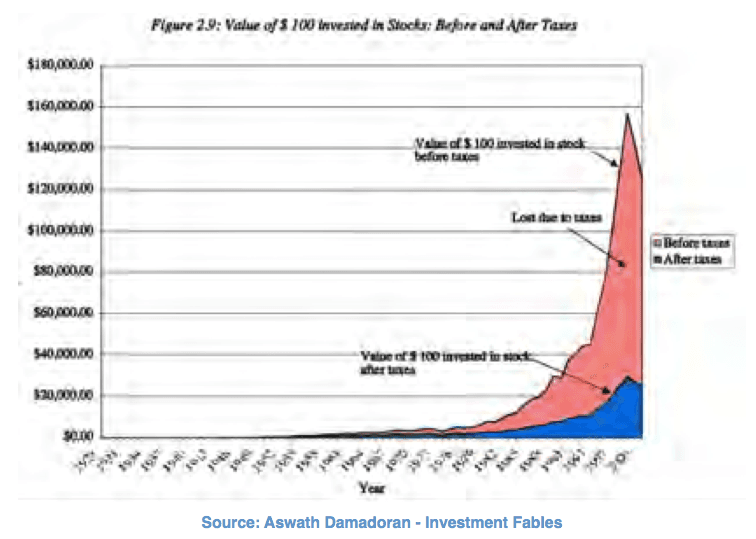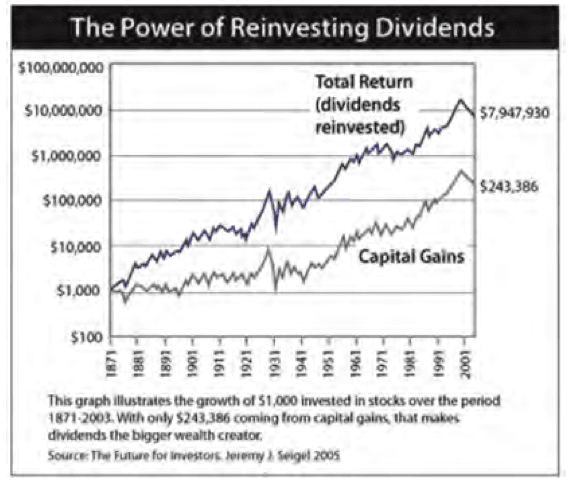The Two Worst Pitfalls for Dividend investors
In the last few chapters, we’ve rammed home the truth that investing in high yield stocks comes with a lot of risk - especially of dividend cuts and volatility - but there are two other temptresses that dividend investors often fall for to their detriment. We must bang the table at this point because, without taking the following two lessons to heart, the expected returns of long term dividend investing could be found to be a complete mirage.
Pitfall 1: Failing to buy in tax-efficient wrappers
It’s important to remember almost all those stellar gains reported in the research reports do not account for tax! In the real world, dividends are taxed as income which is higher than capital gains tax thus creating a massive drag on reported returns.
Income taxes are high!
Historically, dividends have almost always been taxed more punitively than capital gains. According to research by Legg Mason Capital, in the US over the last 50 years dividends have been taxed on average at a rate of 50 percent. Meanwhile in the UK, dividends are taxed on a sliding scale according to your income band meaning that top-rate tax payers pay an awful lot more (36.1%+) for dividend income than capital gains (20%).
Income taxes also need to be paid now
Capital gains taxes can be deferred until they are realised which means they essentially become an interest free loan - providing leverage in your portfolio that can compound growth rates.
Aswath Damadoran illustrates in his book Investment Fables (see figure above) that if you actually factor in the drag that these high income taxes have on some dividend stock strategies, they actually massively underperform the market over the long term, arguably rendering the statistics in Part 1 completely redundant!
But it’s not all bad. You can benefit from the reported outperformance of dividend stocks as long as you always buy them in a tax-efficient wrapper like an ISA or a SIPP in the UK. With these investment accounts taxes are either waived or deferred allowing dividend income to accrue and allowing it to be reinvested at the full face amount. One of the biggest mistakes an investor can make is to forget this. For a further discussion of this very important point, please see the tax breakout pages in the appendix.
Pitfall 2: Failing to always reinvest dividends
There’s a famous fable about an arrogant young Sultan prince who challenged all comers to a game. Boasting of his boundless wealth, the prince offered the winners the prize of their choice. A canny courtier decided to teach him a lesson asking for the winner’s prize to be a chess board with one square each day to be filled with rice - a single grain on the first square, 2 on the second, 4 on the third and doubling in number until the board was filled after 64 days. The prince, thinking he was mocking him by asking for such a measly prize, agreed and subsequently lost the game. Little did he know that by the 64th day the courtier would be demanding 18,446,744,073,709,551,615 grains of rice - a number which could fill the surface of the entire earth several times over!
This is the power of compound interest which we’ve already talked about. Every study into the wealth that can be achieved from dividend strategies has relied on the assumption that all dividends are reinvested back into new shares of the underlying company. By consistently reinvesting dividends, in bear markets or bull, investors can ensure that they are exposed as much as possible to this power of compounding, not only growing their stake in each company, but growing their exposure to price appreciation and dividend growth.
But the evidence suggests that investors who directly own individual stocks reinvest less than 10 percent of the dividends they receive. In fact most investors receive dividend cheques in the post and spend the income quite happily, unaware that they are falling for the ultimate seduction and a brutal unwinding of their potential long term returns.
Very few investors take advantage of so called DRIPs (dividend reinvestment plans) which are often offered for a small fee by companies to automatically reinvest dividends paid back into the company’s shares for you or even better reinvest their dividends systematically themselves. And when investors do reinvest their dividends they are most likely to do so during bull markets, not during the bear markets when dividend reinvestment can provide the ‘return accelerator’ we described in Part 1. Without a consistent dividend reinvestment strategy, dividend investors can only expect sub-par investment returns from dividend stocks.



